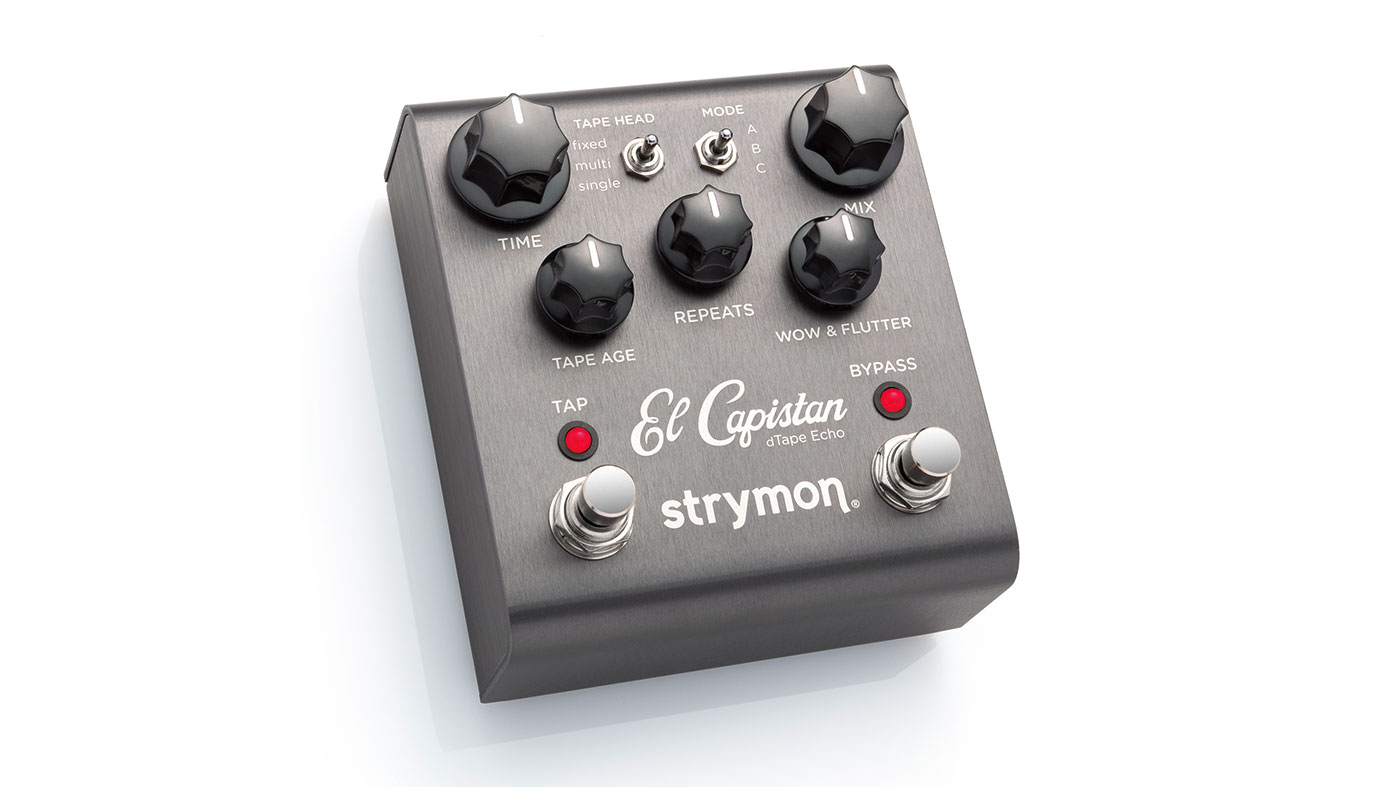
Pete Celi of Strymon reveals what it takes to conceive a unique range modern classics in today’s competitive stompbox arena.
1. What was the first pedal you designed and how did that design come about?
“The first pedal that I was the primary designer of what was the Damage Control TimeLine back in 2005. We wanted to produce a premium-quality delay that was super-flexible and sounded great.
“Earlier, we had introduced a couple of tube preamp pedals with dual 12AX7s running at 250 volts. We kept the tubes in the TimeLine delay using one 12AX7 to sweeten up the signal being sent to the DSP (digital signal processor), and the other directly after the DSP to warm up the processed delay sound. I wrote all the DSP code to craft the sound and response of the delays, and it was the start of what ultimately turned into the Strymon pedals of today.”
2. What do you think makes Strymon pedals unique?
Our philosophy has been to design the pedals without compromise
“Our philosophy has been to design the pedals without compromise, combining top-quality analogue audio paths with powerful DSP algorithms that are developed without constraints. We try to identify sounds and features that can help guitarists perform and create at higher levels.”
3. What’s your best-selling pedal and why do you think that is?
Want all the hottest music and gear news, reviews, deals, features and more, direct to your inbox? Sign up here.
“I’d say the El Capistan and BlueSky might be approaching ‘classic’ status. The sound quality is the first reason people are drawn to our pedals. We spend a lot of time obsessing about the small details, like how the delay saturates when the feedback is cranked, or how smooth the reverb tail decays.”
4. Which notable players/bands have used Strymon pedals?
“Many high-profile musicians use Strymon gear, but it’s always gratifying to see anyone using our pedals to make music.”
5. Tell us a secret about effects you’ve discovered…
“One thing I’ve learned is that you really need to try a pedal for yourself with your own rig to make an informed decision as to whether it will work for you. Also, you need to spend some time with any effect to learn how you can get the most out of it, or how it can pair best with your setup.
“I try not to jump to conclusions after spending only a few minutes with a pedal. Sometimes there are great rewards to be had by doing some experimenting and having a little patience.”

6. What’s your best tone tip?
“Good tone at home when you’re playing by yourself (even if you’re playing loud) won’t necessarily be the right sound when you are playing with a band. You have to leave room in the frequency spectrum for other instruments and vocals to occupy.”
7. Name some common mistakes that guitarists make with effects…
“I think many newer players may have a tendency to use too much gain from their overdrive/distortion pedals to try to emulate the cranked amp/power amp distortion sounds they hear on recordings. I like to set the gain for a nice full distortion when attacking the guitar with big open chords or when I’m digging in, making sure that the sound cleans up decently when playing softer. Another way to achieve this is by using your guitar’s volume control to change the input level going into your overdrive/ distortion pedals.”
8. What’s your favourite vintage pedal and why?
I think there is still work to be done in the area of real-time polyphonic pitch-shifting with regards to the latency/artefact trade-off
“I’m a fan of the Mu-Tron Bi-Phase. It’s got a great airy sweep that accentuates the higher harmonics, and the feedback knob lets you dial in the intensity from subtle to extreme. Also, the flexible routing and I/O options lets you set it up in a number of cool ways with two phaser channels that can be synced or run independently. I like using both channels in parallel in a stereo rig to get some awesomely big sounds.”
9. What are your favourite effects pedal moments to be heard on record and why?
“I’ll go with a couple from the Jimi Hendrix album Band Of Gypsys. The Uni-Vibe on Machine Gun is so thick and juicy - it’s the quintessential Uni-Vibe sound. And on Power To Love, after the intro, Hendrix starts a phrase with what might be the most powerful note ever recorded! His wah pedal sets the tone for a blistering solo riff that has incredible intensity.”
10. What problems have effects designers yet to crack?
“I think there is still work to be done in the area of real-time polyphonic pitch-shifting with regards to the latency/artefact trade-off, especially at higher shift intervals. Improvements are steadily being made, and there are lots of useful applications for the levels of quality that are currently state of the art, but ‘near-perfect’ will continue to be a challenge.”

Guitarist is the longest established UK guitar magazine, offering gear reviews, artist interviews, techniques lessons and loads more, in print, on tablet and on smartphones
Digital: http://bit.ly/GuitaristiOS
If you love guitars, you'll love Guitarist. Find us in print, on Newsstand for iPad, iPhone and other digital readers


